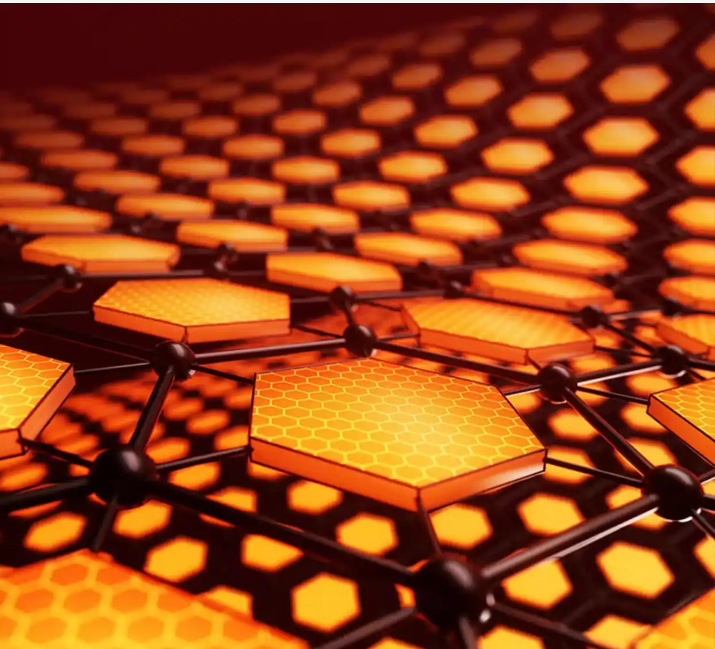Graphene in Flexible Electronics and Wearables: Powering the Future of Smart Devices

🧩 Introduction: The Rise of Flexible and Wearable Electronics
As consumers demand thinner, smarter, and more flexible electronic devices, the field of flexible electronics has grown rapidly.
From smartwatches and fitness trackers to flexible screens and health-monitoring tattoos, the future of electronics is:
-
Stretchable
-
Lightweight
-
Highly conductive
-
Biocompatible
At the heart of this transformation is graphene, a one-atom-thick carbon material with remarkable electrical, mechanical, and thermal properties.
🌟 Why Graphene for Flexible Electronics?
| Property | Benefit for Wearables |
|---|---|
| 2D atomic thickness | Ultra-thin & flexible |
| High conductivity | Enables efficient signal and power transfer |
| Mechanical strength | Withstands bending and stretching |
| Transparency | Ideal for display technologies |
| Biocompatibility | Safe for skin contact & implantable devices |
| Large surface area | Enhances sensing and energy storage |
🔬 Graphene combines the flexibility of plastic with the conductivity of metal — a perfect fit for next-gen electronics.
🧠 Key Application Areas
1. Flexible Sensors
Graphene-based sensors can detect:
-
Strain & motion
-
Temperature
-
Humidity
-
Pressure
-
Glucose & sweat biomarkers
These sensors can be embedded into:
-
Smart clothing
-
Health-monitoring patches
-
E-skin (electronic skin)
💡 Graphene strain sensors can detect motion with sensitivity levels of <0.1% strain — ideal for medical and fitness tracking.
2. Graphene Smart Textiles
Conductive graphene inks and coatings are printed onto fabrics to create intelligent textiles that are:
-
Washable and breathable
-
Capable of power generation or signal transmission
-
Responsive to temperature or UV exposure
Used in:
-
Heated jackets
-
Sportswear with biometric feedback
-
Military uniforms with integrated sensors
3. Energy Storage for Wearables
Graphene is used in:
-
Flexible supercapacitors
-
Miniaturized lithium-ion batteries
-
Wireless charging modules
Its role:
-
Improves energy density
-
Enables bending and folding without performance loss
-
Speeds up charging
Example: A graphene-based supercapacitor integrated into a wristband can charge in seconds and power small devices for hours.
4. Transparent Conductive Films (TCFs)
Graphene films can replace ITO (Indium Tin Oxide) in:
-
Foldable smartphone displays
-
Flexible OLEDs
-
Wearable touchscreens
Advantages:
-
High transparency (>90%)
-
Excellent flexibility
-
Greater durability compared to brittle ITO
5. Graphene-Based E-Skin
Graphene is used in artificial electronic skins that mimic human skin sensitivity.
-
Detects multi-dimensional pressure, temperature, and motion
-
Ultra-thin and stretchable
-
Can be used in prosthetics, robotics, and AR/VR interfaces
6. Biomedical Wearables
Graphene’s biocompatibility and chemical tunability enable:
-
Real-time glucose monitoring in sweat
-
ECG and EEG signal recording
-
Electrochemical biosensors for disease detection
Companies are developing skin-like patches that continuously monitor health and transmit data via Bluetooth or NFC.
🛠 Graphene Integration Techniques
| Method | Description |
|---|---|
| Inkjet printing | Used for creating flexible circuits and sensors directly on textiles or plastic |
| Spray coating | Forms uniform graphene layers over large areas |
| Laser scribing | Writes graphene-based patterns on carbon-rich substrates (e.g., polyimide) |
| Roll-to-roll processing | Enables mass production of flexible graphene films |
🧪 Comparative Advantage Over Traditional Materials
| Feature | Graphene | ITO / Metal / Polymer |
|---|---|---|
| Flexibility | Excellent | Poor–moderate |
| Transparency | High | Moderate |
| Conductivity | High | Moderate |
| Mechanical strength | Exceptional | Limited |
| Cost at scale | Falling rapidly | Relatively stable |
| Biocompatibility | Yes | Not always |
🔍 Commercial Developments & Startups
-
Graphene Flagship (EU): Supports development of wearable biosensors
-
Xenoma (Japan): Smart garments with graphene sensors for motion tracking
-
Grolltex (US): CVD-grown graphene films for wearables
-
Nanomedical Diagnostics: Graphene-based diagnostic platforms for real-time disease detection
🌐 Major brands including Samsung, Huawei, and Nike are investing in graphene-integrated electronics.
🚧 Challenges to Overcome
-
Large-Scale Production
-
Uniformity and reproducibility of CVD graphene films still challenging
-
-
Integration Complexity
-
Combining graphene with textile and polymer substrates without losing conductivity
-
-
Cost
-
Although prices are falling, graphene is still more expensive than traditional coatings or metal wires
-
-
Durability
-
Ensuring graphene layers can survive repeated wash, bend, and abrasion cycles
-
🔮 Future Outlook
-
Fully printable wearables using graphene inks
-
AI-powered graphene sensors for predictive healthcare
-
Graphene e-skin for robots and prosthetics
-
Foldable and rollable consumer electronics powered by graphene circuits
🧬 Graphene isn’t just enhancing devices — it’s enabling entirely new form factors and user experiences.
📘 Conclusion
Graphene is reshaping the future of electronics, from flexible sensors to wearable energy systems. Its atomic thinness, superior conductivity, and biocompatibility make it a keystone material for the next generation of consumer and medical devices.
As production scales and integration technologies improve, graphene wearables may become as common as smartwatches are today — only smarter, lighter, and more powerful.

